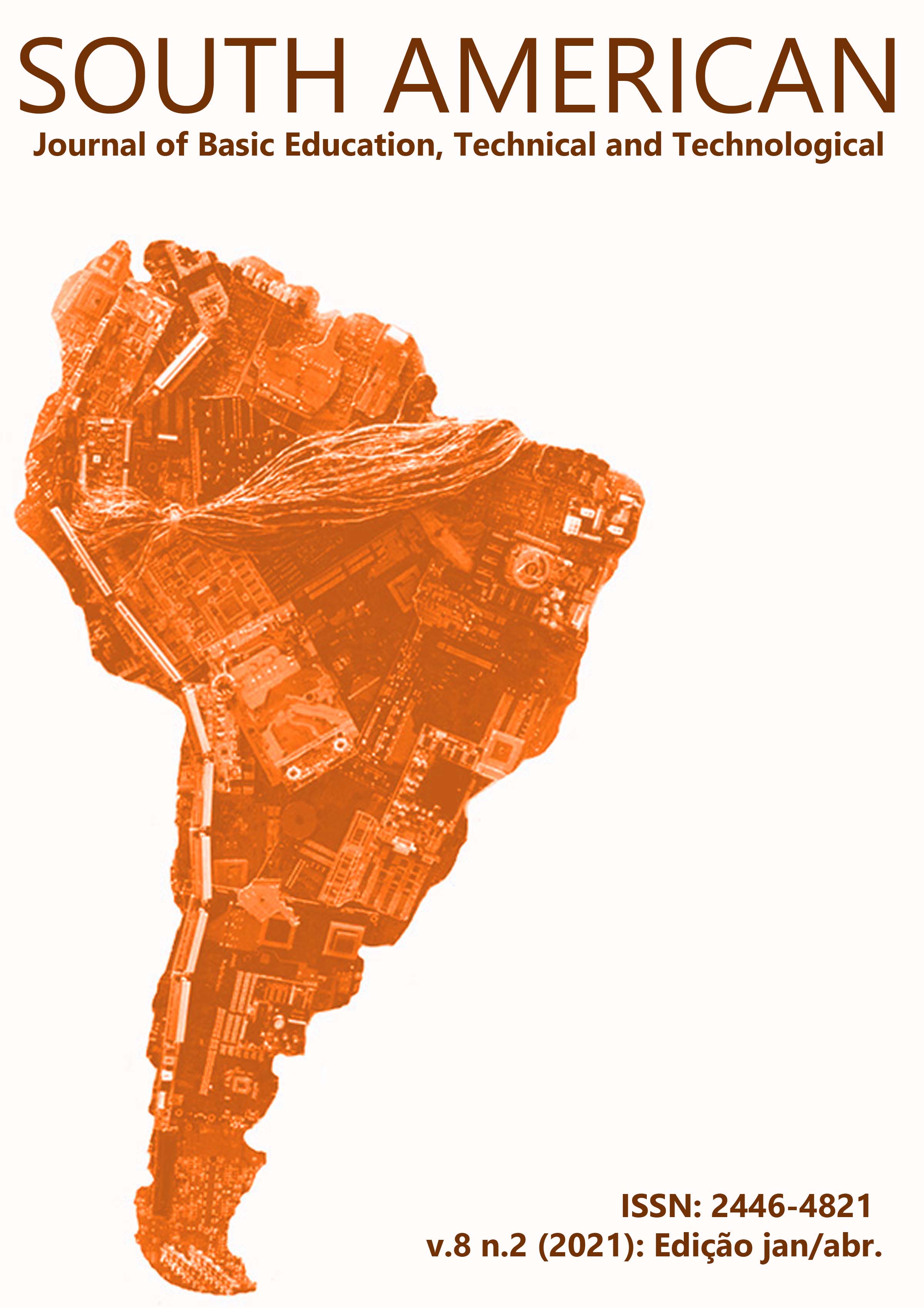MACROINVERTEBRADOS BENTÔNICOS COMO INDICADORES DE RIACHOS DE CAMPINARANA DA MICRORREGIÃO DO VALE DO JURUÁ
Palabras clave:
Aquatic insects, Amazon, BMWP, Water qualityResumen
This study aims to evaluate the effects of sand extraction on water quality and the composition of the benthic macroinvertebrate community. Aquatic invertebrates are diverse and their abundance and distribution are influenced by biotic and abiotic factors, making them a great tool in studies of biomonitoring and bioindication in aquatic environments. The samples was carried out in four streams of a campinarana vegetation complex in the State of Acre, Brazil, at impacted and less impacted points affected by sand extraction. A total of 198 macroinvertebrates were collected, belonging to 11 orders and 24 families. There was a significant difference between streams with respect to their community compositions (Pseudo-F = 4.79; P = 0.001). This study identified that the predominance and greater density of families in impacted and non-impacted areas belong to the order Diptera (52.6 ± 30.3), probably due to their opportunistic habits. In addition, impacted streams had less abundance and richness of ETP and were characterized by the BMWP index with “dubious” quality
Citas
[2] DAMASCO, G. et al. Disentangling the role of edaphic variability, flooding regime and topography of Amazonian white‐sand vegetation. Journal of Vegetation Science, v. 24, n. 2, p. 384-394, 2013. DOI: 10.1111/j.1654-1103.2012.01464.x
[3] ANDERSON, A. B. (1981). White-sand vegetation of Brazilian Amazonia. Biotropica.13, 199-210. DOI: 10.2307/2388125.
[4] DA SILVA, P.E.S., et al. Fauna de flebotomíneos (Diptera: Psychodidae) de uma reserva de campina no Estado do Amazonas, e sua importância epidemiológica. Revista da Sociedade Brasileira de Medicina Tropical, v. 43, n. 1, p. 78-81, 2010. DOI: 10.1590/S0037-86822010000100017.
[5] SHARMA, S.; PANDEY, P.; DAVE, V. Research article role of aquatic beetles for water quality assessment. International Journal of Recent Scientific Research, v. 4, n. 11, p. 1673-1676, 2013. DOI: 10.24327/IJRSR
[6] DALY, D. C., et al., The white‐sand vegetation of Acre, Brazil. Biotropica, v. 48, n. 1, p. 81-89, 2016. DOI: 10.1111/btp.12307.
[7] VANNOTE, R.L.; SWEENEY, B.W., Geographic analysis of thermal equilibria: a conceptual model for evaluating the effect of natural and modified thermal regimes on aquatic insect communities. The American Naturalist, v. 115, n. 5, p. 667-695, 1980. DOI: 10.1086/283591.
[8] CASATTI, L., et al. Stream fish, water and habitat quality in a pasture dominated basin, southeastern Brazil. Brazilian Journal of Biology, v. 66, n. 2B, p. 681-696, 2006. DOI: 10.1590/S1519-69842006000400012.
[9] ROSENBERG, D.M.; RESH, V.H. Freshwater biomonitoring and benthic macroinvertebrates. Journal of the North American Benthological Society, v. 12,n. 2, p. 220-222, 1993. DOI: 10.2307/1467358.
[10] HAMADA, N.; NESSIMIAN, J.L.; QUERINO, R.B. Insetos aquáticos na Amazônia brasileira: taxonomia, biologia e ecologia. Manaus: Editora do INPA, p. 724, 2014. ISBN: 978-85-211-0123-9.
[11] TAKEDA, A.M., et al. Invertebrados associados às macrófitas aquáticas da planície de inundação do alto Rio Paraná (Brasil). Ecologia e manejo de macrófitas aquáticas, p. 243-260, 2003. In HENRY-SILVA, G. G., MOURA, R. S. T. D., DANTAS, L. L. D. O. Richness and distribution of aquatic macrophytes in Brazilian semi-arid aquatic ecosystems. Acta Limnologica Brasiliensia, v. 22 n. 2, p. 147-156, 2010. DOI: 10.4322/actalb.02202004.
[12] SALLES, F.F.; JÚNIOR, N.F. Habitat e hábitos. In: HAMADA, N; NESSIMIAN, JL; QUERINO, RB. Insetos aquáticos na Amazônia brasileira: taxonomia, biologia e ecologia. Manaus: Publisher of INPA. cap. 3, 39-49, 2014. ISBN: 978-85-211-0123-9.
[13] CALLISTO, M.; MORETTI, M.; GOULART, M. Macroinvertebrados bentônicos como ferramenta para avaliar a saúde de riachos. Revista Brasileira de Recursos Hídricos. 6, 71-82, 2001.
[14] TEIXEIRA, K.Q.; SOUZA, L.L. Macroinvertebrados bentônicos como bioindicadores de qualidade da água do lago de Tefé, Amazonas. SIB, Universidade do Estado do Amazonas – UEA, 2017
[15] FERNÁNDEZ, H; DOMÍNGUEZ, E. Guía para la determinación de los arthrópodos bentónicos Sudamericanos. Universidad Navional de Tucumán, San Miguel de Tucumán, 2001.
[16] FROEHLICH, C.G. Guia on-line: Identificação de larvas de Insetos Aquáticos do Estado de São Paulo. 2007 Available in: <http://sites.ffclrp.usp.br/aguadoce/guiaonline>. Accessed in 13.06.2017.
[17] JUNQUEIRA, V.M.; CAMPOS, S.C.M. Adaptation of the “BMWP” method for water quality evaluation to Rio das Velhas watershed (Minas Gerais, Brazil). Acta Limnologica Brasiliensia. v. 10, p. 125-135, 1998.
[18] ANDERSON, M.; GORLEY, R.N.; CLARKE, R.K. Permanova+ for Primer: Guide to Software and Statisticl Methods. Primer-E Limited, 2008.
[19] DUFRÊNE, M.; LEGENDRE, P. Species assemblages and indicator species: the need for a flexible asymmetrical approach. Ecological monographs, v. 67 n. 3, p. 345-366, 1997. DOI: 10.2307/2963459.
[20] MCCUNE, B.; MEFFORD, MJ. Pc-ord: multivariate analysis of ecological data; Version 4 for Windows; [User's Guide]. MjM software design, 1999.
[21] MECHI, A.; SANCHES, D.L. Impactos ambientais da mineração no Estado de São Paulo. Estudos avançados. v.24, p. 209-220, 2010. DOI: 10.1590/S0103-40142010000100016.
[22] O'CONNOR, N.A., The effects of habitat complexity on the macroinvertebrates colonising wood substrates in a lowland stream. Oecologia. v. 85, p. 504-512, 1991. DOI: 10.1007/BF00323762.
[23] SANCHEZ-ARGUELLO, et al. Spatial andtemporal variation of stream communities in a human-affected tropicalwatershed. International Journal of Limnology. v. 46, p. 149–156, 2010. DOI: 10.1051/limn/2010019.
[24] MARTINS, R.T., et al. Effects of urbanization on stream benthic invertebrate communities in Central Amazon. Ecological indicators. v. 73, p. 480-491, 2017. DOI: 10.1016/j.ecolind.2016.10.013.
[25] REIS, D.F.D., et al. Measurement of the Ecological Integrity of Cerrado Streams Using Biological Metrics and the Index of Habitat Integrity. Insects. v. 8, n. 1, p. 10, 2017. DOI: 10.3390/insects8010010.
[26] MERRITT, R.W.; CUMMINS, K.W. An introduction to the aquatic insects of North America. Journal of the North American Benthological Society. v. 28, n. 1, p. 266-267, 1996. DOI: 10.1899/28.1BR.266.1.
[27] DAHL, J.; JOHNSON R.K.; SANDIN L. Detection of organic pollution of streams in southern Sweden using benthic macroinvertebrates. In: Hering D., Verdonschot P.F.M., Moog O., Sandin L. (eds) Integrated Assessment of Running Waters in Europe. Developments in Hydrobiology. v. 175, p. 161-172, 2004. DOI: 10.1007/978-94-007-0993-5_10.










